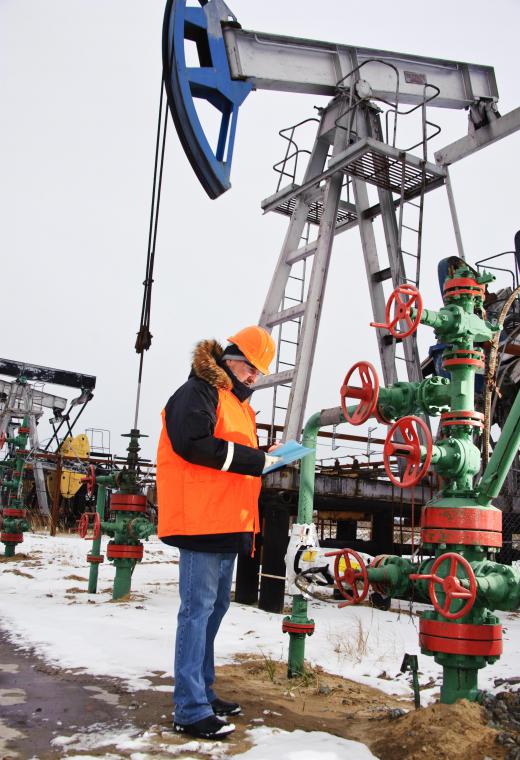A wellhead is the topmost point of a well. Wellheads serve a number of functions while a well is being drilled, once it is completed and operational, and when it is shut down, either temporarily or permanently. The wellhead is installed early on in the process so that it can serve as a point of attachment for a blowout preventer, a piece of equipment which prevents catastrophic failure of a well, and once a well is completed, equipment for regulating well operations can be attached at the wellhead.
The wellhead provides pressure sealing as well as room for casing and tubing related to the well, including permanent and temporary equipment introduced into the well. When a wellbore is completed, a pump can be attached to the wellhead or it may be fitted with a device known as a Christmas tree. The Christmas tree holds valves which are used to control pressure inside the wellbore and to regulate the flow of fluids from the well. This device can also be used as a point of entry to inject things into the well.

The term “Christmas tree” is a reference to the shape of this device, which does from a distance resemble a festively decorated tree because it is usually brightly colored for safety and highly branched to make room for valves and pipes. The wellhead is right at the surface and may be partially buried, while the Christmas tree projects so that it will be accessible to technicians who need to be able to adjust it in order to operate the well successfully.
Wellheads can vary in size and complexity depending on the type of well and the location. With things like undersea oil wells, for example, there are substantial pressure and pollution concerns which must be addressed to make the well as safe as possible. By contrast, with something like a household water well, there are fewer safety concerns and less need for very precise control.
Engineers who work with wells want to avoid situations in which wells fail or other problems develop. Control panels are usually located in central areas to provide remote access and the well can also be worked on at the wellhead. When wells need to be temporarily taken offline or maintained, adjustments can be made to the Christmas tree to address concerns about pressure differentials and other situations which could contribute to the development of workplace hazards.
Ever since she began contributing to the site several years ago, Mary has embraced the exciting challenge of being a About Mechanics researcher and writer. Mary has a liberal arts degree from Goddard College and spends her free time reading, cooking, and exploring the great outdoors.

